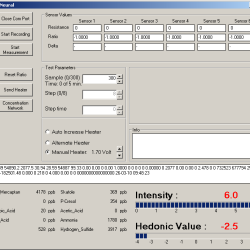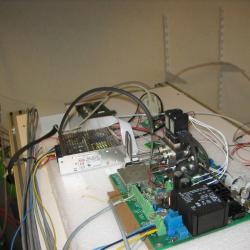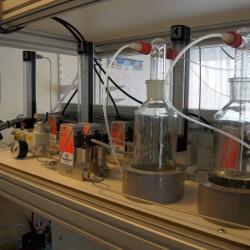Electronic odour sensor system for determination of odour nuisance caused by pig farms.
An electronic nose
Odour is composed by molecular particles in air. The human nose has about 30 million perception cells to identify a scent. These cells react on the particles present in air so the brain can identify the odour. This is called the sense of smell.
The sense of smell is the most sensitive perception organ of man. This organ is in direct connection to the emotional part of the brain. The daily handlings are directly influenced by the scent of air. This is not desirable in all situations. This is called odour nuisance.
Odour nuisance is caused by a high concentration of particles in air where danger arises for the physical or mentally health of man. The discipline studying the experience of odour is called olfactometrie. Olfactometrie is a very complex discipline because of the mixture of objective en subjective experiences.
In the massive livestock is odour nuisance problematic because of the high concentration odour sources on a limited area. To measure odour nuisance a panel criticize the measurement air. This method is time and cost expensive and not reproducible.
Because of the few alternatives on the commercial market for odour measurement at pig farms has E.M.S. researched an electronic odour measurement device.
Odour nuisance is determined in 3 steps:
- The MGA (multi gas analyzer) sensor determines a ‘fingerprint’ of the odorant air. The determination is optimized to save time. After this determination is completed the fingerprint is analyzed by an artificial neural network.
- The artificial neural network is a statistical computer algorithm that determines the concentration of the main odour compounds in pig air.
- These concentration are converted to European Odour Units (OUe). This unit represents the odour experience and is described in the VDI 3882 guidelines and NEN-13725 standard. With the concentration in OUe it is possible to determine the odour nuisance.





